I have seen the question from the title and its variants asked at various places and have decided to write this text and keep it as a reference. All standard backpack loops and their purpose are described.
There are at least four different groups of loops on a typical backpack. You will find them on the lid, on the bottom, on the front, on the shoulder harness, and sometimes also on the sides.
You can use them to attach a lot of gear that normally does not go into the pack. This includes trekking poles, an ice axe, skis, a helmet, a tripod, an axe, a riffle, an extra day pack, and some other items.
All of them are described below and shown in pictures. Note that text is not about straps.
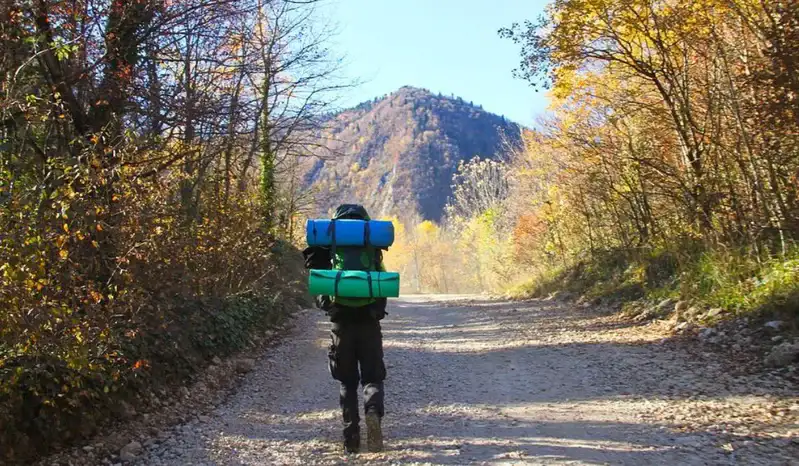
Ice axe attachment loops
This attachment system includes a thick loop on the bottom of the pack, sometimes two, and accompanied with a tie-off bungee higher on the front of the pack.
You can see this in the picture below from my Osprey Stratos 24 pack. The loop is in the picture on the left and the bungee is on the right.
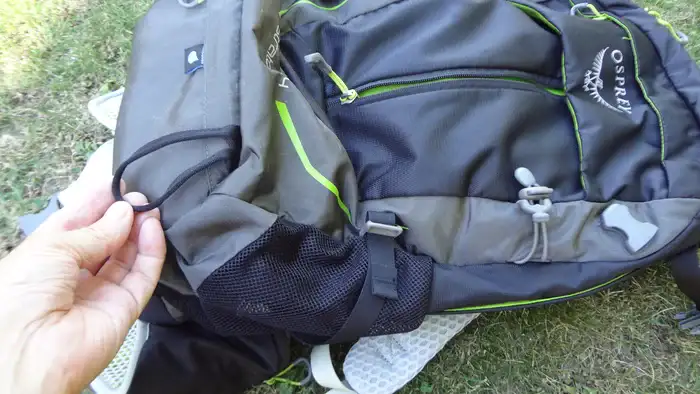
You can use the same loop for trekking poles of course, but some packs have them separately, more below. If this loop is long enough you can attach a classic axe as well.
Note that these and other loops are the main difference between hiking and standard backpacks.
Trekking poles attachment loops
Most packs come with some sort of attachment system for trekking poles. In a great design you will have them two as in the picture below, you can see them on the right.
In my pack in the picture they are paired with a single bungee tie-off higher on the pack; here you can see it on the left. But some packs do not have such upper attachment element, and in such cases you will use your upper side strap.
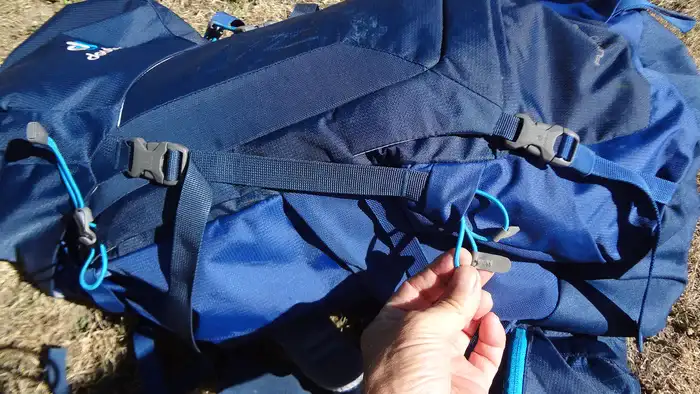
But there are Osprey packs with their own unique Stow-on-the-Go attachment system. You can see it in my Osprey Stratos 24 pack, and I can tell you I use it a lot and I like it.
It includes a thick loop with a plastic cover that is on the left side of the pack, you can see it on the right in the picture, and a bungee cord that is on the left shoulder strap, this is the yellow cord on the left.
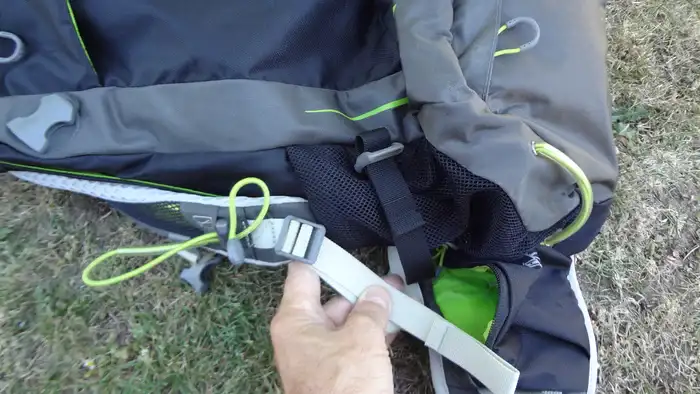
This attachment system is useful when you need free hands to take pictures, or to have snacks on the go, or when you have a scramble section in front of you. You can see how this works in this short video below.
Lid attachment loops
Typically you will see four separate loops, as in the picture below from my Deuter pack. So with some piece of cord you can attach lighter items here. This can be a sleeping pad or anything similar.
Some packs have two separate short daisy chains with the same purpose.
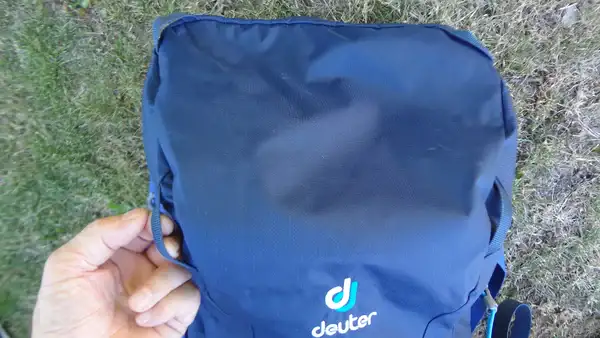
Shoulder harness attachment loops
Here you can have at least two types.
1. Loops for water hose routing. You will find these on most packs, and usually on both sides of the shoulder harness. The picture below shows them in my Osprey Stratos 24 pack.
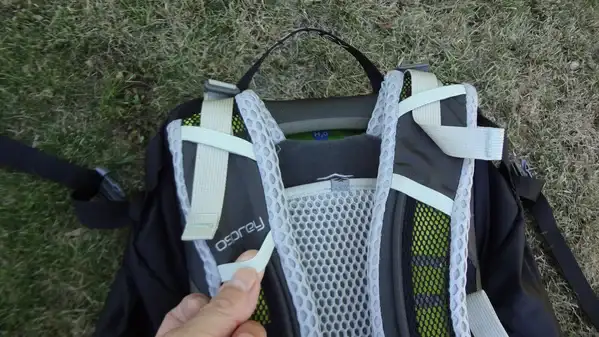
2. Some packs may have a loop for glasses. This is a frequent feature of Gregory packs. The picture below shows this in the Gregory Kalmia packs:
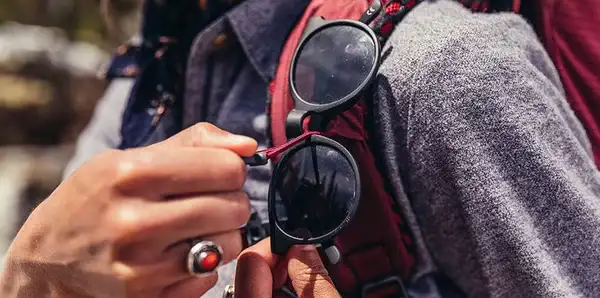
Grab loop to carry the pack short distances
The picture below shows where this strap is located. In some packs this is a webbing loop like in the picture, but sometimes you will see it in the shape of a cord.
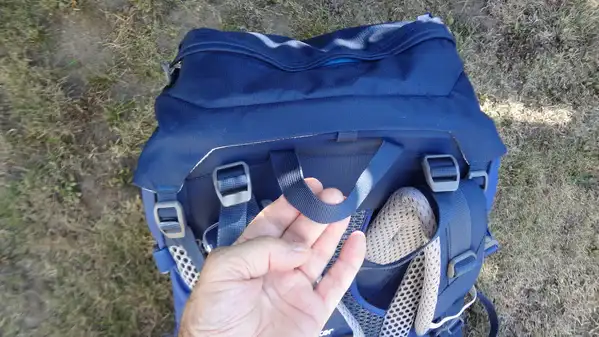
Some less frequent loops
• You will find packs with additional loops on the front. These are usually to attach a helmet holder.
You have this feature in Deuter Futura Air Trek packs and you can see them in the picture, they are above the bungee loops for poles attachment:
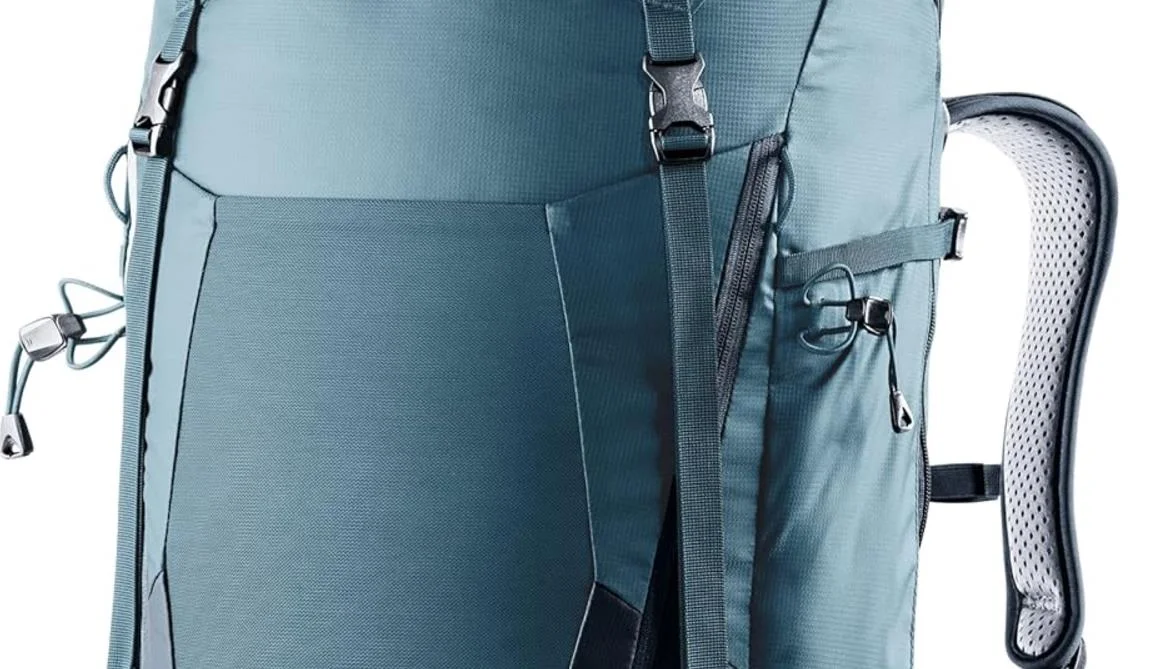
• But some larger packs have such loops to attach a smaller day pack from the same brand. You have such packs from Osprey like Aether & Ariel, Volt & Viva, and also packs from the Porter, Farpoint 80, and Sojourn series.
• There are packs with additional larger and stronger loops for skis. You have this in the incredible UNLTD packs from Osprey, see it in the Osprey UNLTD AntiGravity 64 Pack for Men & Women.
• Daisy chains: there are tactical type backpacks with one or two sets of such low profile loops on the front. You can use them together with a piece of cord to fix some items there.
The Kelty Redwing 50 in the picture is a great example, here the daisy chains also include grab handles. In some packs you will find such daisy chains on the bottom as well.
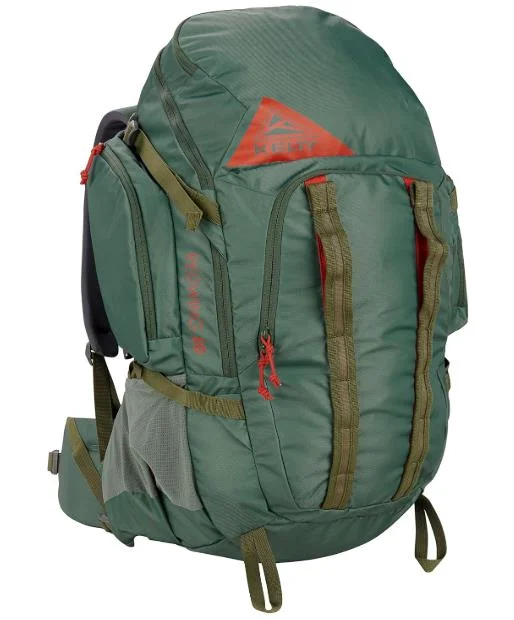
Final thoughts
In summary, a hiking or backpacking pack usually has many loops from outside. Some of them can be used for a direct attachment of gear, and for some you have to add a piece of cord.
Some of the loops are also used in combination with straps. This is typical for bottom loops and side straps combination used for poles or an ice axe.
More about outdoor equipment questions and answers you will find in the category FAQs here in the site. In particular, read about backpack volume capacity and weight capacity.
Please use the comment box below in the case of questions or comments. Subscribe to my weakly newsletter and stay informed, the subscription form is given below. Thank you for reading and have a nice day.
Leave a Reply